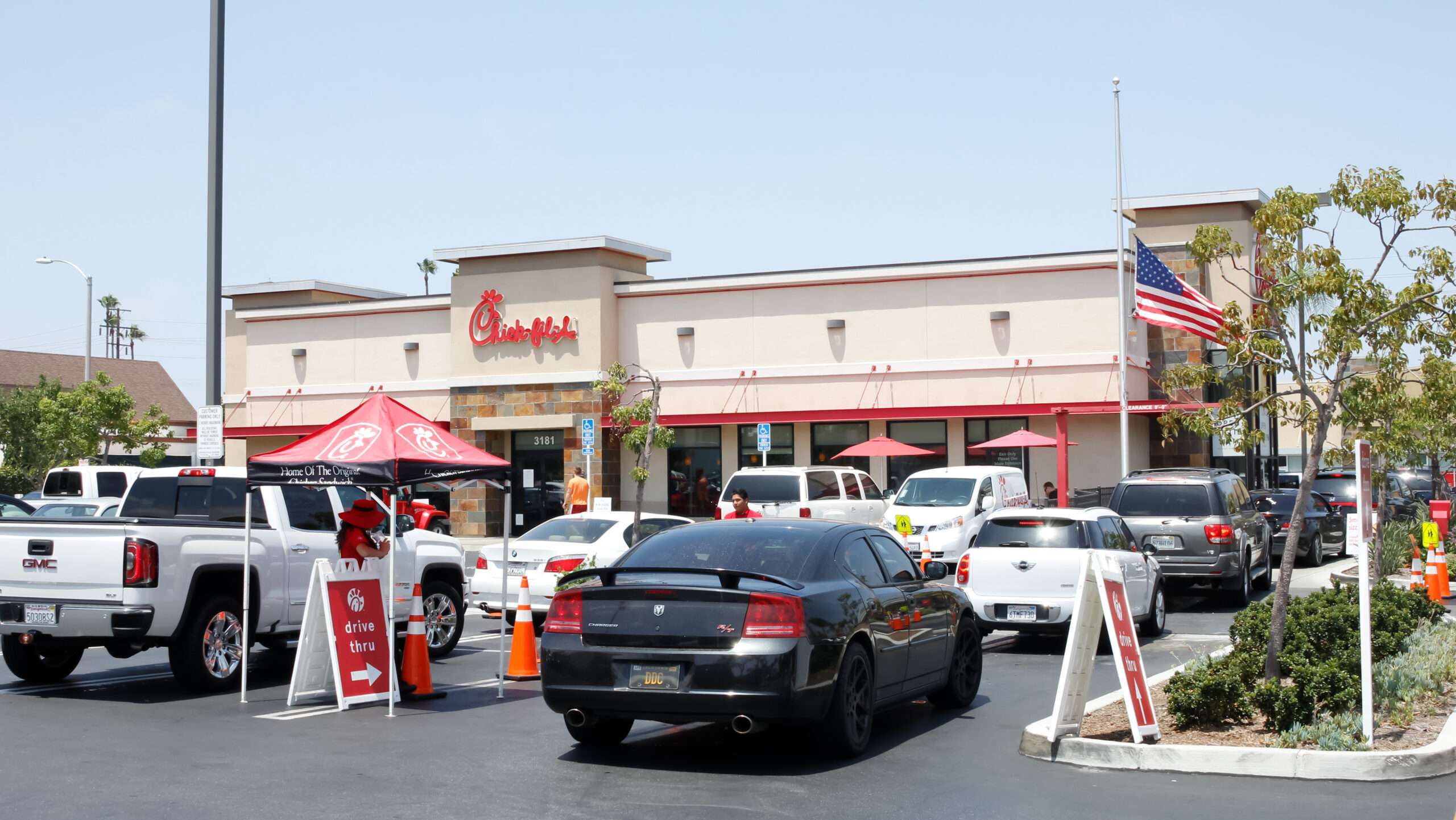Drive-thru windows have made a significant comeback, and—similar to Zoom, remote work, and grocery delivery services—they continue to be popular in the post-pandemic world. The trend towards drive-thrus has become a lasting change in consumer behavior, prompting government intervention through regulations, restrictions, and bans.
Last year, The New York Times reported on the enduring popularity of drive-thrus post-pandemic, with a 30 percent increase in traffic from 2019 to 2022. Even after the public health emergency subsided, drive-thrus accounted for 70 percent of fast-service restaurant sales during social distancing, and two-thirds of fast-food transactions still occur through drive-thrus.
Researchers at Northwestern’s Kellogg School of Management used cellphone data to track average time spent at McDonald’s, Dunkin’ Donuts, and Starbucks—representing about 10 percent of all fast-food stores in the U.S.—and have confirmed that short drive-thru visits increased during COVID and remained high, while longer sit-down visits decreased and continued to decline.
Despite Gen Zers frequenting drive-thrus and sharing their experiences on TikTok, city governments are moving towards banning new drive-thrus. Cities like Minneapolis and Atlanta have already implemented bans on new drive-thrus, with others such as St. Paul, Minnesota, and Annapolis, Maryland, considering similar restrictions.
While previous efforts to combat fast-food culture focused on addressing obesity, current concerns revolve around traffic congestion and promoting walkability. Planners criticize the traffic jams caused by drive-thru queues at popular chains like Starbucks and Chick-fil-A, arguing that the car-centric design of drive-thrus hinders efforts to encourage alternative modes of transportation like biking and public transit.
For urban planners, the focus is on walkability. Keba Samuel, chair of the Charlotte Planning Commission, emphasized the importance of reducing auto-centric environments in favor of more mobility options like light rail. However, drive-thrus remain in demand by customers and have been crucial for many restaurants’ survival during and after the pandemic.
A study from Kellogg revealed that fast-service restaurants with drive-thru windows saw only a 4 percent decline in sales from 2019 to 2022, whereas those without drive-thrus experienced a significant 50 percent drop. This shift is evident in the transition of Starbucks customers and revenue to drive-thru-only outlets.
Drive-thru bans fail to consider innovative market responses to traffic congestion issues. Taco Bell, for instance, introduced its “Defy” outlet with multiple drive-thru lanes and food delivery via tubes. Chick-fil-A is also implementing its elevated drive-thru concept to enhance efficiency and speed of service.
Rather than imposing drive-thru bans, local governments could explore zoning allowances for high-efficiency drive-thru designs to address traffic concerns. These designs support the demand for drive-thrus while mitigating congestion issues.
In addition, many fast-food outlets serve as vital community hubs in lower- and middle-class areas, offering a social gathering place for various activities. While drive-thrus may not align with urban planners’ visions, they remain essential and increasingly relevant in today’s society.




